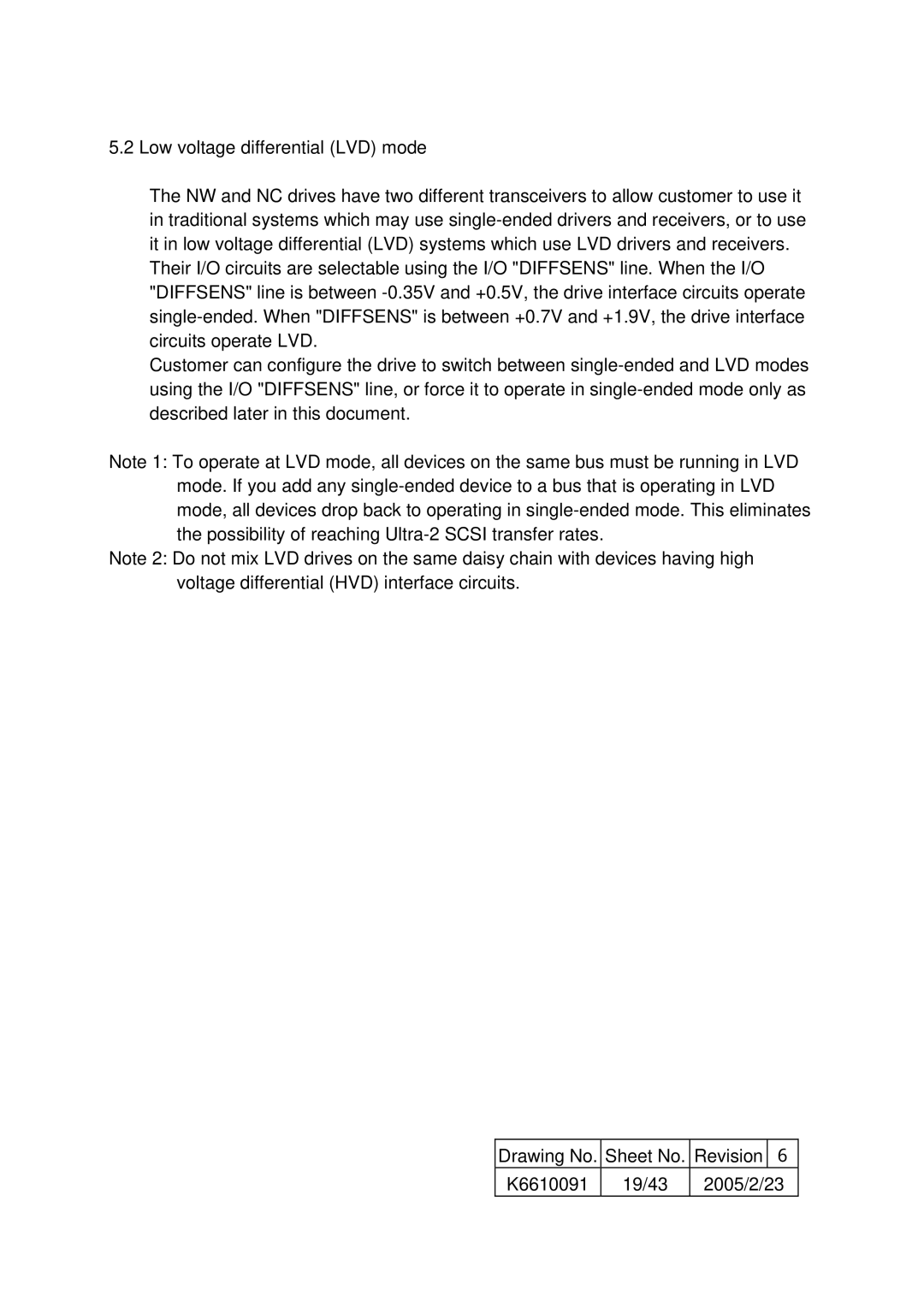
5.2 Low voltage differential (LVD) mode
The NW and NC drives have two different transceivers to allow customer to use it in traditional systems which may use
Their I/O circuits are selectable using the I/O "DIFFSENS" line. When the I/O "DIFFSENS" line is between
Customer can configure the drive to switch between
Note 1: To operate at LVD mode, all devices on the same bus must be running in LVD mode. If you add any
Note 2: Do not mix LVD drives on the same daisy chain with devices having high voltage differential (HVD) interface circuits.
Drawing No. Sheet No. Revision 6 | ||
K6610091 | 19/43 | 2005/2/23 |
